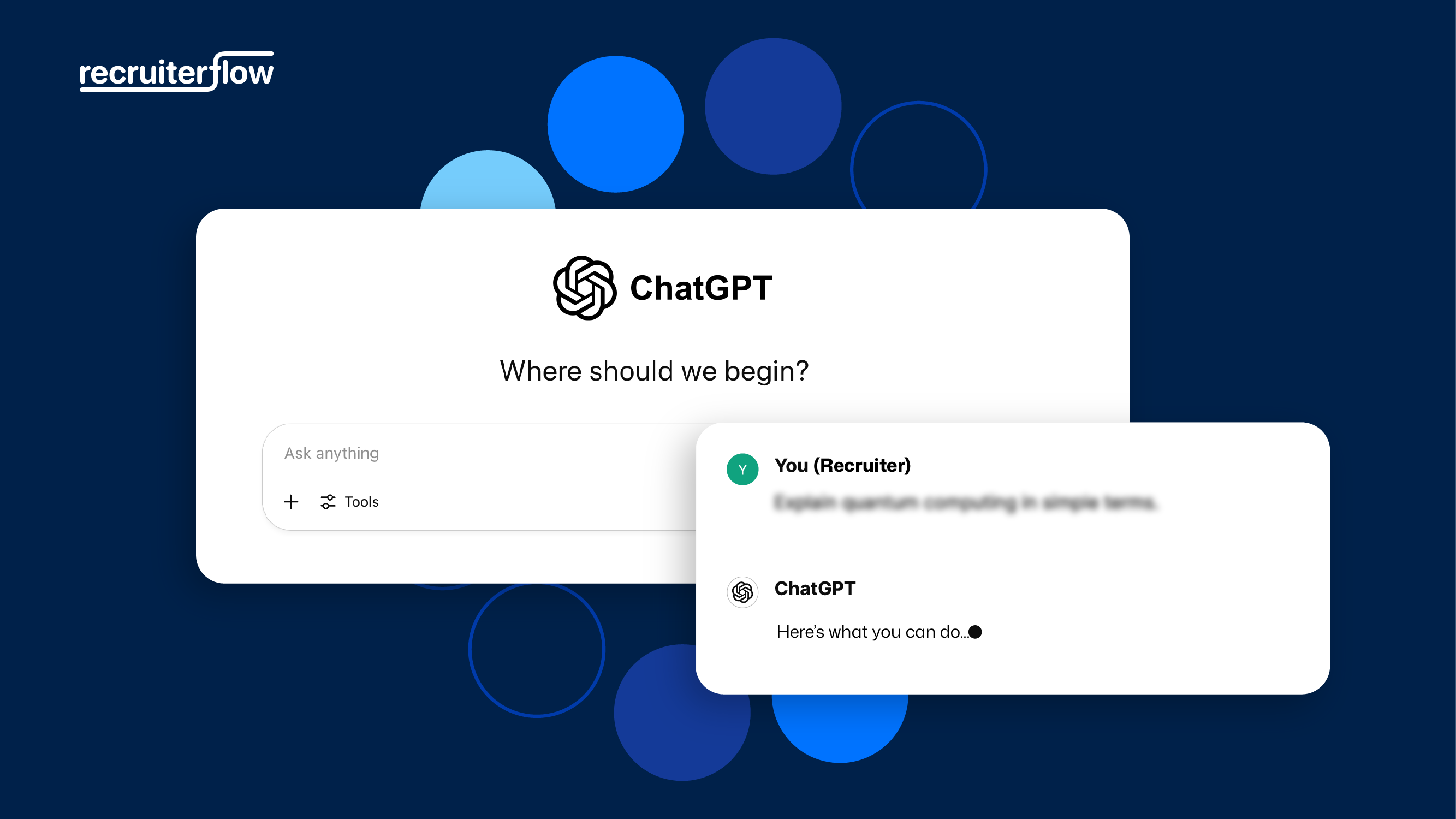
4 Best Practices for Recruiting Tech Talent

A 2012 study found employers with excellent recruitment processes experienced 3.5 times more revenue growth and twice the profit margin relative to organizations using less capable recruitment strategies. Top recruiters are in high demand, especially for the tech industry. 70% of this industry is estimated to have a skill shortage, and the demand for recruiting top tech talent is ramping up. Recruiters need to grasp this demand as an opportunity and seek out sought-after skills from a small talent pool.
In this article, you’ll learn how you can do this using 4 given best practices. Each best practice chosen addresses a unique challenge tech recruiters face today, helping professionals strategize to negate these challenges.
Acknowledging the recruitment challenges in tech to build best practices
‘‘ With the need for legacy business to transition from old technology stacks to newer ones, it is not surprising that many companies and projects are needing to find newer, in-demand talent to drive that evolution” – Steven Daniels, Chief Technology Officer at Monster
77% of companies planned to hire tech talent in 2020. Yet 80% of those roles were deemed as difficult to fill.
A 2021 survey by Codingame listed reasons why these roles were hard to fill. They noted the greatest challenges for recruiting tech talent as:
- Finding qualified candidates (61%)
- Standing out from other companies to attract talent (25%)
- Aligning with the hiring manager’s demands/job requirements (24%)
- Recruiting within tight time frames (24%)
These challenges are concerning. For instance, employers spent $140 billion on recruitment activities in 2012, yet with the prevalence of the above pains, the effectiveness of this investment is limited.
Poor recruitment processes have a direct impact on an organization’s bottom line. In contrast, effective recruitment can boost revenue by x3.5.
Hence external recruiters need to understand these common recruitment challenges and act to negate them appropriately.
With this in mind, below you’re presented with 4 best practices for recruiting tech talent.
4 Recruiting Best Practices For Recruiting Tech Talent
Recruiting best practices – #1: Generate more leads
Recruiter challenge: Finding qualified leads.
Solution: Generate more leads.
Successful recruiters have a steady source of leads to choose from, so they’re able to find the qualified leads they require. Exploring new recruitment avenues, such as the hybrid casual approach, can significantly diversify the talent pool With this in mind, how do you grow your lead influx and widen your talent pool?
Listed below are lead generation strategies every recruiter must use:
- Build relationships with firms and get on PSLs: To become a preferred supplier, demonstrate to your client that you can find and recruit the people they need, in the right time frame. Research your contacts and find out what makes them tick. Have a look at their Facebook page. Have they posted anything on Twitter? Note what they’re struggling with and explain how you can solve their biggest pain points with the help of Kubernetes architecture and other key technologies. Be persistent but don’t be pushy.
- Advertise your recruitment agency online: This one’s pretty self-explanatory. Make sure you have a Google presence with a website set up. Optimize your website using SEO strategies (search engine optimization) and PPC (pay-per-click advertising). Set up a blog and use it often, as this is the single most important factor in determining where you rank on Google.
Also, check How to Grow Your Staffing Agency and Stand Out From Competition - Make effective use of social media: By using social media effectively, you can build lasting relationships with employers that go far beyond filling the odd vacancy. Make sure to find out where your audience is, for instance, if your audience mostly hangs out on LinkedIn, then there is little use in concentrating your social media efforts on Twitter.
Case study: Robert Walters Group
Recruiting agency Robert Walters Group was called upon by the global sports and entertainment agency Wasserman Media Group. Wasserman was experiencing a high level of organic growth, and as a result, ramped up their recruiting efforts to meet the demands of this growth.
Robert Walters focused their recruitment strategy on building a strong B2B relationship with Wasserman, to understand their needs and requirements. Walters could then make specific investments based on these needs, successfully delivering the right candidates, and making themselves a preferred supplier for Wasserman.
“We were impressed by the team’s ability to understand our needs and identify candidates with the right skill set and fit for our team, ultimately leading to three successful appointments who are already making a positive impact with our clients.” Belinda Stevenson, Senior Director – Wasserman Media Group
Recruiting best practice – #2: Know your unique selling point
Recruitment challenge: Standing out from other companies to attract talent.
Solution: Leverage your unique selling point.
What makes you different from other recruitment agencies? Where in the industry do you add value?
This is about knowing your agency’s story and understanding what makes you different from your competitors. Take a step back and identify what makes your recruitment agency competitive.
- Understand your target audience: Make a list of what you know about your target candidates and clients, what their needs are, and how your agency will address those needs.
- List what you think is great about your agency: What is it you’re good at? Do you offer excellent recruitment services? A rich network of niche candidates? Avoid attributing low fees as a unique selling point. Undercutting your competition is not something to shout about.
- Look for confirmation: Data will tell you clearly if you’re excelling in areas you think you’re great at, and reveal hidden strengths in areas you weren’t aware of. For instance, you might think you have a strong network of tech candidates, yet your recruitment CRM says you’ve placed more candidates in Marketing and Finance roles. Also, take a look at your reviews, what are people saying about you?
- List out what your competitors are good/bad at: Perform a SWOT analysis by listing the strengths, weaknesses, opportunities, and threats of your competitors. Knowing where your competitors fall short is how to identify gaps you can use as opportunities to win business.
You can also check out our detailed guide on recruitment technology.
Recruiting best practice – #3: Standardize your recruiting operations and document the job requirements
Recruitment challenge: Aligning with hiring manager’s demands/job requirements.
Solution: Standardize your recruiting operations and document the job requirements.
A standard operating procedure (SOP) is a detailed operation that outlines the steps needed to complete specific tasks following set standards. Here we’re talking about the standards set by a given hiring manager. SOPs are crucial to operating a recruitment agency that consistently meets quality standards.
When you document and standardize your recruitment procedures for each client, your given consistency, quality, and overall boosts in productivity. Your SOPs should always be easy to follow, and specific to your organization.
To write your SOPs, there isn’t a typical format that works for all. Procedures will vary from one recruitment agency to another, given the hiring manager’s needs. However, listed below are some best practices you should consider:
- Conduct a meeting with teams that will be responsible for the procedure in question.
- Begin with a brief introduction.
- List all the required resources.
- Jot down the current procedure, e.g. What tasks are completed when and by whom.
- Add supporting media to build context if needed.
- Add any necessary resources.
- Add the hiring manager’s requirements to your procedure.
- Review the procedure and edit if necessary.
- Test the procedures in a controlled environment.
- Make improvements based on observations during the test run if needed.
- Implement.
Your SOPs are a form of a documented process. A process is a set of tasks that when executed in a given order, deliver the required outcome. You’ll want to be documenting the processes you use in recruitment to increase transparency and ensure consistency. Once more, documenting your processes gives you a means of detailing the unique job requirements for your clients. With these requirements noted, they can’t be missed.
You can document your business operations and SOPs using a simple pen-and-paper approach, or via checklists. Checklists are an excellent way of noting down business operations and SOPs in a clear and concise way.
It’s recommended that you utilize tools specially designed with this task in mind. Search for business process management tools and find one that’s right for you.
Case study: Google
Google reportedly receives around 3 million CVs every year. How does Google deal with such a high volume of candidates and maintain consistency during its recruitment process?
Google has a set hiring approach that has a standardized structure given via a template. This template:
- Emphasizes Google’s commitment to diversity in recruitment.
- Inspires the candidate with a short spiel about Google’s achievements and aspirations to reinforce a strong company culture.
- Outlines role responsibilities.
- Presents minimum requirements for the candidates.
- Highlights the preferred candidate qualifications.
By using this template structure, the recruitment process is standardized creating the consistency needed to always meet Google’s recruitment requirements and job specifications.
Recruiting best practice – #4: Automate repetitive tasks
Recruitment challenge: Recruiting in tight time-frames
Solution: Automate repetitive tasks in your recruitment processes.
Automating recruitment business activities helps improve performance by reducing errors and boosting quality and speed. In some cases, automation can deliver outcomes far beyond human capabilities. Automation is also attributed to productivity gains of 0.8 to 1.4% globally every year according to McKinsey and Company. Time savings come hand-in-hand with these productivity gains. Once more, by automating your repetitive tasks, manual labor is reduced, saving you yet more time to meet tight time-frames in recruitment.
Coming back to that McKinsey report, almost half of all business activities have the potential to be automated. Capturing this automation opportunity is easy when using business process management tools and recruiting agency software like Recruiterflow.
For instance, with Recruiterflow you can automate your email campaigns to increase your placement reach in less time. Recruiters use this feature to deliver superior candidate experiences, drive sales, and manage clients, and a sales pipeline all at a push of a button. On average, Recruiterflow saves recruiters at least 5 hours/per day/per user, making it easier for them to meet tight time frames.
Case study: Recruiterflow
The real estate company CoWrks uses Recruiterflow to automate aspects of their recruitment process, saving time and allowing them to meet tight deadlines.
As Vinayak from CoWrks says:
“I could get the rest of the team started in no time at all. We love the Chrome extension and automation. Lifesaver as it saves me at least 30-40 minutes every day.”
Others vouch for Recruiterflow’s automation power and the benefits this brings. For instance, Baker from the Human Resources company Alpine HR explains;
”…the customizations and process automation features save a tremendous amount of administrative time, allowing us to focus on impactful recruiting activities with clients and candidates.” – Baker from Alpine
Others praise Recruiterflow’s powerful automation abilities…
“We have been able to automate a large number of repetitive tasks and the time saved can be used to make more calls and generate extra revenue.” – G2 Reviews, Administrator in Education Management
Recruiterflow illustrates the benefits of automation and its ability to save users heaps of time.
Recruit Tech Talent The Right Way
Generate more leads, know your unique selling point, standardize your recruitment operations, document your job requirements, and automate repetitive tasks. These are your 4 recruitment best practices, each carefully selected to overcome the greatest challenges facing recruiters in tech today.
Implementing these practices will improve the effectiveness of your recruitment efforts. Learn from the best to be the best and get your recruitment strategy right.
This is a guest post contribution by Jane Courtnell, content writer at Process Street.
Recruitment




